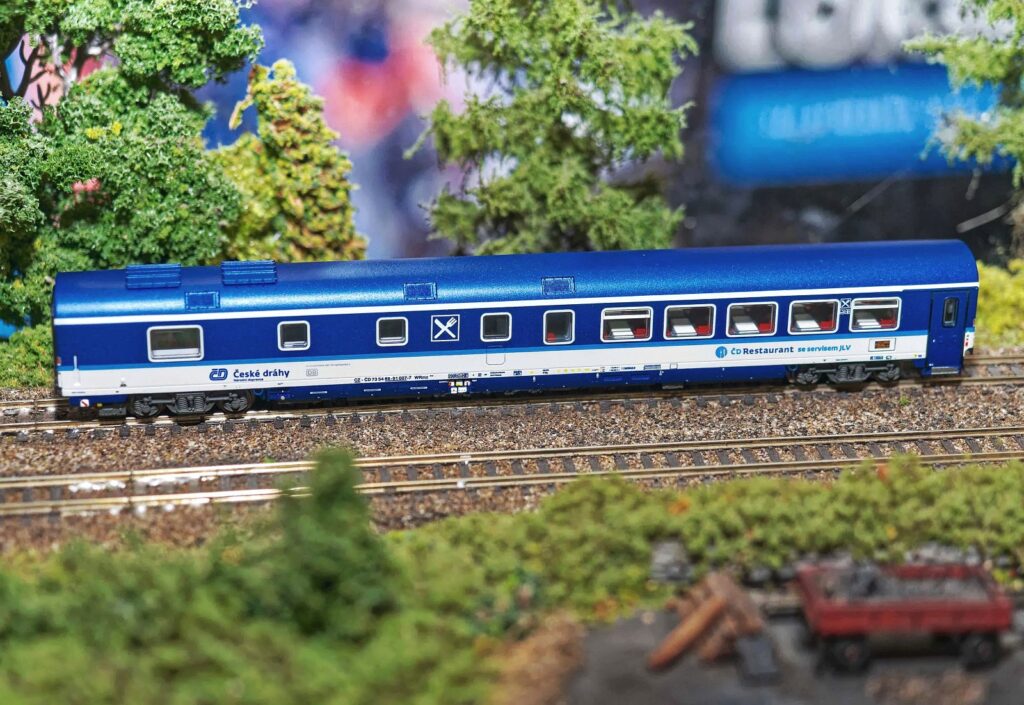Description
Train destination: EC 176 Johannes Brahms, Praha hl.n. – Hamburg-Altona
Car number 73 54 88-91 007-7 with white window frames
Model features:
The exterior and interior design of the cars is prototypical. Precise painting and printing. Many specially attached parts, partly made of etched metal. Detailed reproduction of the wagon aprons and underbody, separately applied units corresponding to the condition of the prototype. Precise reproduction of the SGP-300 bogies with fine engravings.
Close coupler kinematics and NEM coupler pocket. The car is prepared for the installation of interior lighting from the accessories program (delivery will be announced separately), current pick-up without contact strips via metal bearing pans in the bogies and half axles.
Clearance Ampz and Bmz: 165mm, WRmz: 168.1mm
The series of these wagon types will be successively expanded with variants in coloring and printing. The disabled-accessible (Bhmpz 228) and bicycle transport wagons (Bdmpz 227) – all of which have been converted from former ÖBB wagons – are also in preparation.
The role models
Due to the increase in passenger train traffic and the need to maintain coaches with a maximum permissible speed of 200 km/h, Czech Railways/Ceské Dráhy procured two series of EuroCity passenger coaches from 1999/2000 (Ampz 146 and Bmz 245 as well as WRmz 815) and again from 2006 (Ampz 143, Bmz 241) 1. and 2nd class and matching dining floors at Siemens in Austria. The coach concept was strongly based on the pressure-tight passenger coaches delivered to the Austrian Federal Railways from 1989, but was refined in some technical and visual respects.
For the 1st class was exclusively open-plan coaches with 2+1 seating. The large room was and is divided by a glass partition with a passageway. This partition wall also divided the smoking and non-smoking areas until 2007. The 2nd class was delivered exclusively as a compartment coach with six seats per compartment in classic style. A bistro area was provided at one end of the dining car and the restaurant area at the other. The bistro area initially housed a semi-circular table with chairs and bistro bar tables, which were replaced with a counter during the renovation from around 2013/14.
All cars were equipped with the smooth-running SGP-300 bogies from Siemens, a multi-voltage equipment for cross-border travel even in countries with different heating voltages. As with the ÖBB counterparts, the units on the underbody were designed with a closed trough; only the transformer and air conditioning unit are openly accessible. Their design differs from both the original ÖBB series and the “upgrade” version.
The carriages are primarily used in EuroCity trains from Hamburg and Kiel to Prague, but are also used in domestic Czech traffic, as well as on trains to Slovakia. Aarhus in Denmark, Binz on the island of Rügen, Szczecin in Poland, Ljubljana in Slovenia, Linz, Vienna and Budapest were and are among the destinations of these carriages.




